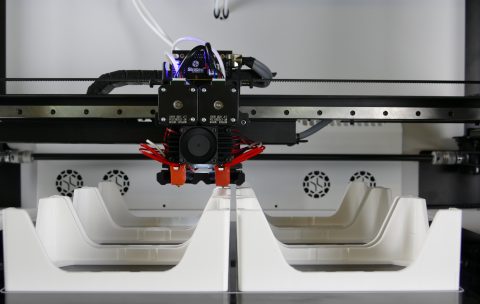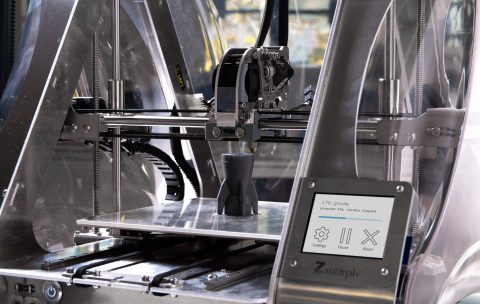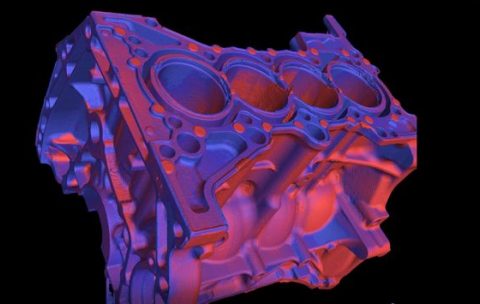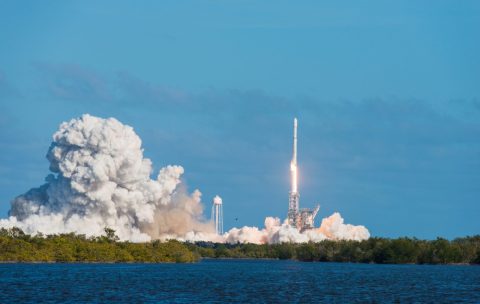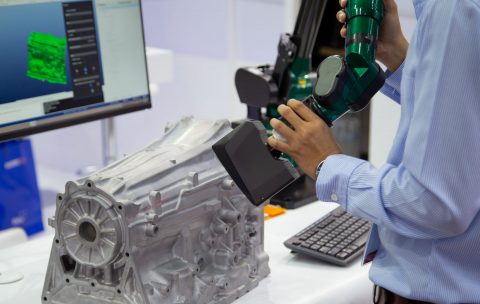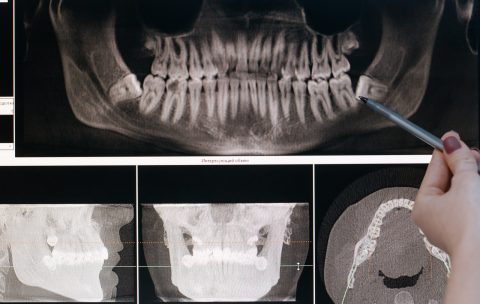Twenty years ago, millimeters used to be the acceptable standard for resolution on an X-ray of a machine part.
Today, we work in nanometers.
With today’s CT advancements, the industry employs x-ray tube technologies that provide resolutions down to a millionth of the size they did just twenty years ago.
This is crucial when dealing with automated inspection processes in heavily regulated industries such as aerospace. With the ever growing demand to improve quality and safety guidelines, comes a necessity to conduct inspections via 3D CT.
What is Automated Inspection, and how does it work?
Automated inspection is a process that removes manual activities from an operator using a combination of hardware (CT machines) and software (platform for data). Together, machine parts are introduced to be scanned, analyzed and categorized on whether the product passes or fails against the acceptance criteria.
This entire process is completely automated, with little to no operator intervention.
In aerospace, the inspected part could be printed using additive manufacturing which allows for lightning-quick builds while still achieving the detail of past casting methods. With products often containing complex internal geometries it is necessary to find an inspection tool that allows the capture of such intricacies.
This is where 3D CT comes in.
Being one of the only scanning tools that allow for high-resolution scans for both internal and external surfaces, 3D CT can be used to locate imperfections or defects with extreme detail analysis.
Working in a fast production environment would require faster inspection processes. In this case, a semi-automated inspection would be more appropriate whereby parts are manually handled and CT operations are automated.
Here is a broad example of what this could look like:
- Loading parts
- Part classifications
- CT configurations
- CT scan & analysis
- Data evaluation
It may look like a straightforward process. But CT machines still require to be monitored by trained technicians which remains to be one of the biggest challenges with the growing need to simplify operations.
Maintenance & Performance
Daily use of any machine causes wear and tear – and its own set of challenges.
A scan is only as accurate as the circumstances that surround it allow.
With nanometer accuracy comes the challenge of wear and tear – especially while using Automated Defect Recognition (ADR). For instance, CT robotic arms and molds that hold parts will likely suffer from erosion over the thousands of scans they conduct.
It only takes the scanning apparatus of a CT which laid in position ‘A’ to shift ever so slightly over time to cause for the rejection of machine parts as it recognises its own parameters deviating from standard.
This is something manufacturers and consumers of 3D CT must always keep in mind. Running routine checks to maintain, alter, calibrate and modify is essential for smooth operation and data accuracy. Although most vendors of CT offer support services, we recommend dedicating an in-house champion to guarantee machine efficiency without delay.
Aside from the somewhat downside of wear and tear, CT machines are still robust.
With the frameworks of the top systems available being made of granite, temperature and vibration stability is far higher compared to metallic alternatives. While metal frameworks aren’t inadequate in most contexts, they are more suited to lab environments, where vibrations can be minimized and temperatures controlled.
As the sector’s use of this technology increases in speed and efficiency, manual loading will become the bottleneck in the inspection process. Some countries offer cheap enough labour to manually load every individual part, but this can introduce human error and other potential inconsistencies.
In any case, loading/unloading will always be a requirement for high volume inspection, and the eventual goal of completely automating the 3D CT process becomes more and more of a reality every year.
Share to:
New Paradigm in Additive Manufacturing
Read about the benefits for Computed Tomography for Additive Manufacturing

